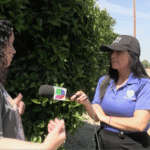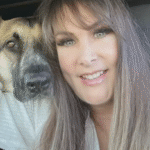Breeder: Miller, Atlee
City, State Zip: Sugarcreek, OH 44681
Year: 2005
USDA License: 31-A-0121
Date of CAPS Investigation: 2005-04-08
Approximately 35 dogs and three puppies. Breeds: Yorkshire Terriers, Eskimos, Bichon Frises The Miller’s kennel consisted of a wooden barn with 10 indoor/outdoor enclosures on two opposite sides. It had PVC piping and treated wire with doggie-doors in between the indoor and outdoor cages. The floors of the outdoor cages were treated wire with plastic sheets underneath to catch debris; the indoor cages had plastic floorings. The wire floors of the outdoor cages were both sagging and bent low (3.1(a)- Structure; construction). In one area the wire was broken so there were sharp edges pointing into the pens (3.1(c)(1)(ii)-Surfaces). There were several days of fecal accumulation on the plastic sheeting under the wire floors (3.11(a)- Cleaning of primary enclosures). The ground next to the sheeting had months of fecal accumulation piled next to it and washed along the ground (3.1(f)-Drainage and waste disposal). The indoor cages had fecal stains on their plastic walls and floors (3.1(c)(3)-Surfaces). Metal self feeders and plastic water dishes were in each cage. Each enclosure contained two to four dogs. Cleaning, medical, and storage supplies, as well as plastic bins full of food, were stored on top of the indoor cages (3.1(e)-Storage). There were five whelping enclosures in the barn, two set above another three, and lifted about four feet above the ground. Each enclosure had a plastic holding cage with a doggie-door to access a treated wire cage. The plastic cages had fecal stains covering their walls, and three had feces smeared all over their floorings (3.1(c)(3)-Surfaces). About a week’s worth of feces and kibble covered plastic sheets under the floors of the wire cages (3.11(a)-Cleaning of primary enclosures). Two cages had adult Bichon Frises, one with a single Bichon puppy and the other with two Bichon puppies. The cages containing puppies had mats on their plastic floors. The doggie-doors of the enclosures were holes cut in the plastic walls, which were left open for the puppies inside to climb through; their paws could slip through the holes of the wire floorings outside (3.1(a)-Structure; construction). The floor of the kennel was covered in dirt and kibble, smeared along its surface (3.1(c)(3)-Cleaning). The windows lining the walls of the kennel were dingy and covered in a white and brown residue (3.1(c)(1)-Surfaces).
Download attachments:MillerAtlee.pdf




